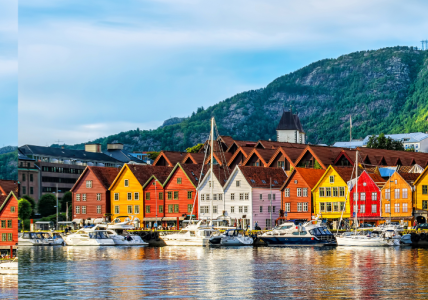Only halfway through its planned duration, the North Sea Region project PARTRIDGE is garnering significant public interest and policy uptake. Birdlife Netherlands (Vogelbescherming Nederland) calls the project's preliminary results ‘spectacular’.
The PARTRIDGE project takes a bottom-up approach to tackling European farmland biodiversity decline – a long-standing problem that has so far found no solution. A main reason for the plummeting wildlife populations is today’s intensive farming methods which make life difficult for species that depend on food and shelter in farmland areas.
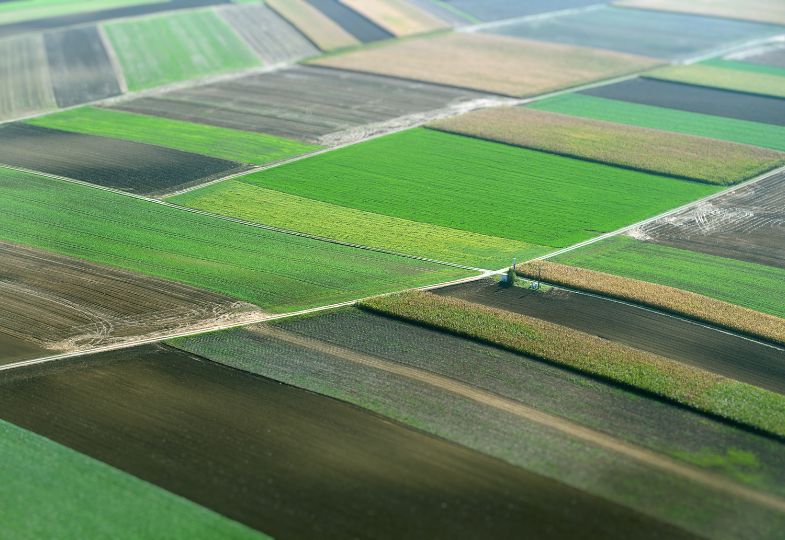
Intensive farming leaves little room for wildlife habitats. Photo: Colourbox.
An alarming fall in the numbers of European birds and insects is well-documented. For example, in Germany, a study found the abundance of insects had come down by 75 % in 25 years. Even common species like the grey partridge follow the same pattern. In France, 8 in 10 partridges have been lost during the past 23 years, whilst the UK has lost a staggering 91 % of the partridges that used to thrive in the English countryside.
Partridge-friendly measures benefit many species
Focusing on its namesake bird, the PARTRIDGE project collaborates closely with farmers, hunters, conservationists, government agencies, and volunteers to help the grey partridge thrive better.
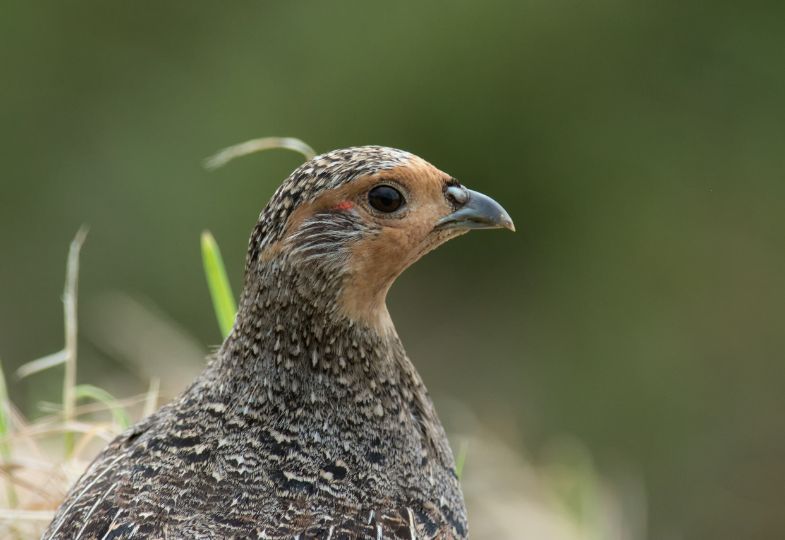
The partridge is an iconic farmland bird species. Photo: Jannie Timmer.
Francis Buner is coordinator of PARTRIDGE and senior conservation scientist at the UK Game and Wildlife Conservation Trust (GWCT). He explains: ‘The partridge is the flagship species in our project. This iconic bird tenders the hearts of people because they are beautiful and display a moving social behaviour with strong family bonds. They do not migrate and require quality habitat all your round, so whatever we do for the partridge is bound to benefit many other farmland species.’
Armed with carefully developed concepts for creating good habitat, the project has set up ten 500 ha demonstration sites in England, Scotland, Belgium, Germany, and the Netherlands. In total, 85 farms are dedicating more than 7 % of their arable land to creating quality habitats for the partridge. The main measures include ‘beetle banks’ and flower plots that provide food, nesting and winter cover for the birds and other wildlife.

PARTRIDGE wildflower plot in Germany from the project’s own-developed autumn seed mix. This includes native flower species that benefit specialised insects. Photo: PARTRIDGE.
Gaining ground for biodiversity
What makes farmers want to give up 7 % of their farmed area for biodiversity? ‘The hunting value is often an important reason, in particular in the UK where most of the involved farmers are also hunters. Whereas in the Netherlands, farmers more often engage simply because they want to help biodiversity,’ explains Francis Buner.
Time and knowledge are important success factors in collaborating with farmers. ‘Understanding the farmer is a big part of our approach. I see myself as a salesperson “selling” good habitat to the farmer. To be taken seriously, you need to understand farming practices, so that you can suggest options that are feasible in the eyes of the farmer. Also, you need to keep at it. Many schemes fail because the engagement stops once the farmer has signed some agreement. In this project, we take a lot of time to engage continuously.’
The project aims to increase biodiversity by 30 % in the pilot sites, and initial results look very promising. ‘We know it works and I am confident that we will reach this goal. The only joker is bad weather that might cause setbacks,’ states Buner.
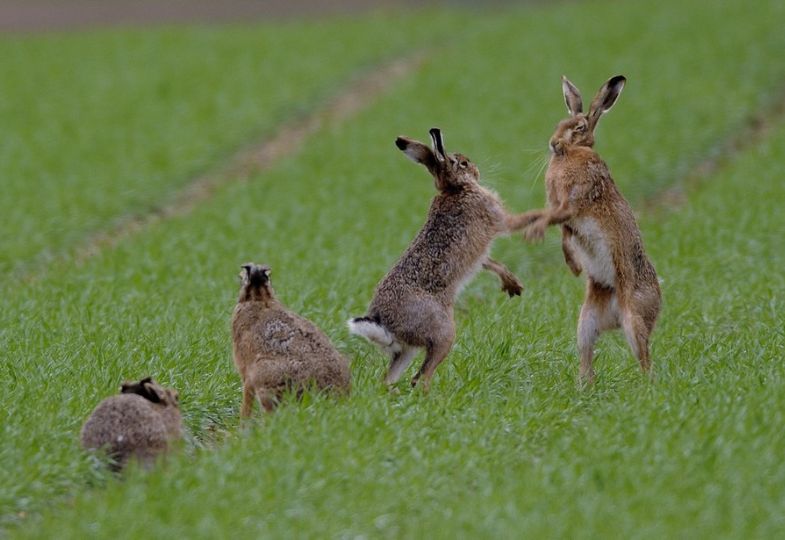
Hares are among the wild animals that have benefitted from improved management across all PARTRIDGE demo sites. Photo: Markus Jenny.
The project clearly resonates with many stakeholders. In July 2018, Birdlife Netherlands (Vogelbescherming Nederland) hailed an ‘insect explosion’ in the Dutch pilots, citing a dramatic increase not only in insect numbers, but also in the diversity of insect species, compared to local reference sites. In the same month, the project was covered by the Dutch Broadcast Foundation (NOS).
These are just the latest in a series of a visibility breakthroughs for the PARTRIDGE project in the Netherlands. In December 2017, the Dutch PARTRIDGE team behind the demo site Oude Doorn received the Golden Medlar Award. This led to national radio and TV broadcasts reaching over 1 million Dutch citizens.
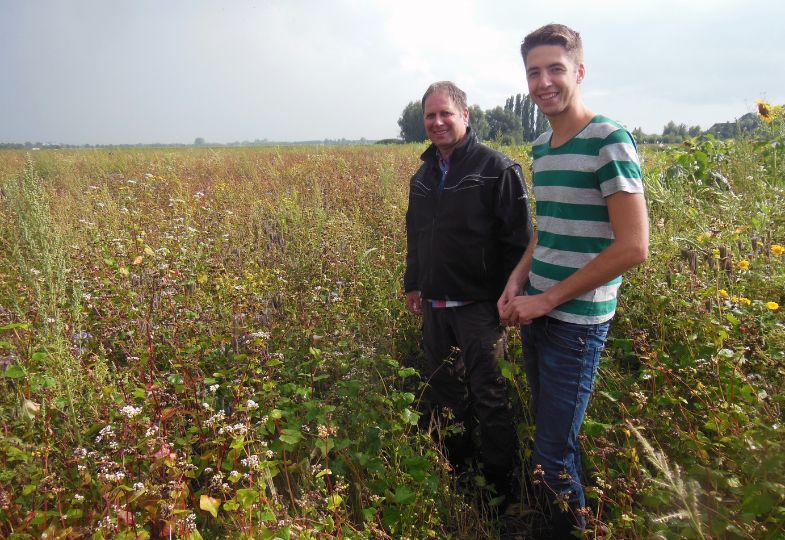
Farmers at the Oude Doorn pilot site. Photo: PARTRIDGE
The project is also gaining traction in other North Sea Region countries. For example, Scottish government advisor Professor Russel Griggs has visited the Whitburgh Farms pilot site ; the Flemish agricultural school VABI has established its own PARTRIDGE flower plot for students to learn about nature-friendly farming; and in May 2018, the German ARTE/ZDF TV channel filmed the flower plots of a local pilot site for a documentary about the decline of insects in Germany.
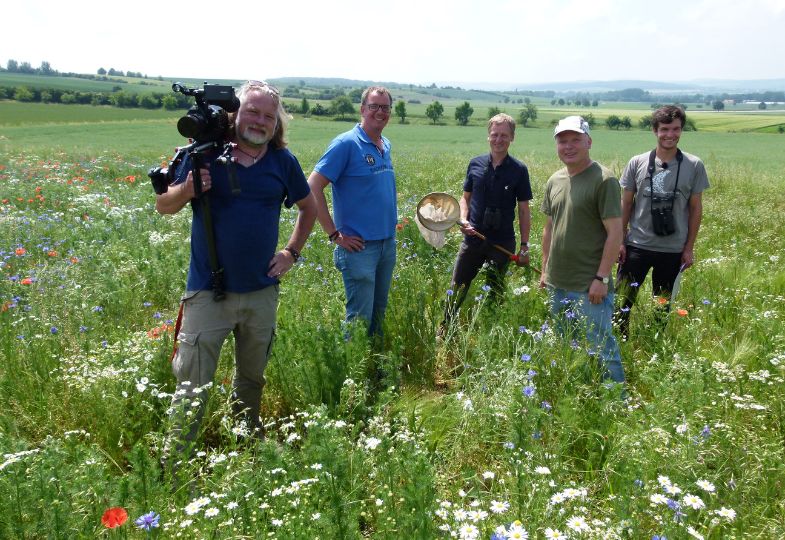
ARTE/ZDF TV filming the German Göttinger flower plot. Photo: PARTRIDGE
In addition, the methodologies developed by the project are being picked up by local neighbours of demonstration sites and are inspiring stakeholders outside the North Sea Region to adopt similar measures, e.g. in Austria, Ireland, Northern Ireland, and Hungary. Recently, the project presented at the international Fishing, Hunting and Arms International Expo where they were filmed for Romanian TV. The event also led to starting a project similar to PARTRIDGE in Eastern Europe.
Getting the ear of politicians
The project aims to have at least one of its core measures adopted by national policy in each pilot country. This happened recently in the Netherlands, where regional authorities and the national government are implementing PARTRIDGE habitat measures in their agrienvironment schemes.
Organised farm walks at the pilot sites have turned out to be a major asset in engaging with policymakers as well as the public. ‘Politicians react differently when they see with their own eyes how it’s done. Like everyone else, they soften when they see all the wildlife that exists in the habitats created by the farmers,’ reflects Francis Buner.
A number of policymakers including several cabinet ministers and EU officials have visited demonstration sites in the UK, Belgium, and the Netherlands. Last year, 25 Danish Parliament members including the former Minister of Environment Esben Lunde Larsen visited the UK Rotherfield demonstration farm. Another UK PARTRIDGE pilot, the Allerton project, was recently lauded in the British House of Lords.
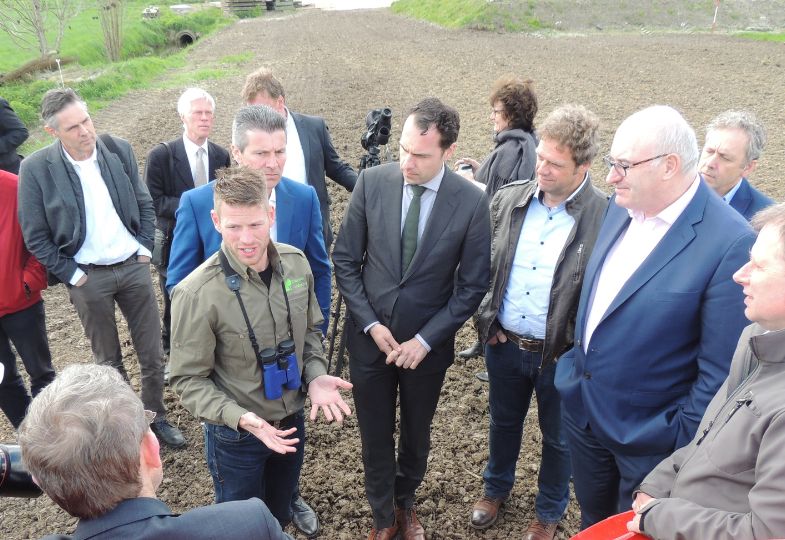
Phil Hogan, European Commissioner for Agriculture together with Dutch politicians at Oude Doorn demo site in the Netherlands. Photo: PARTRIDGE
A a sign of the project’s growing recognition, they were invited to join a top agricultural conference in Brussels (Forum for the Future of Agriculture, FFA) on 27 March 2018. The FFA is a key European event where issues of agriculture and the environment are discussed in open dialogue.
How did the project manage to create this level of attention? Paul Stephens, GWCT funding manager and administration officer of PARTRIDGE, ventures some possible reasons: ‘This may be partly about timing – we are demonstrating a workable solution just when momentum is building up for doing something about farmland biodiversity decline. It certainly also helps that each partner has an excellent network amongst key national organisations. And then we do try to be strategic, for example we always look out for opportunities to bring politicians to our farm walks.’
Interreg set-up underpins reach and impact potential
The transnational set-up of this Interreg project plays a vital role in spurring the project’s success, says Francis Buner. ‘Because there are five countries involved rather than just one or two, we have a much bigger reach and potential for influencing policymaking.’
He also highlights the project’s trials and demonstrations and its links to the rest of society. ‘As a conservation scientist, you often experience that you may come up with solutions as part of a research project, but then the good ideas go nowhere after that.’
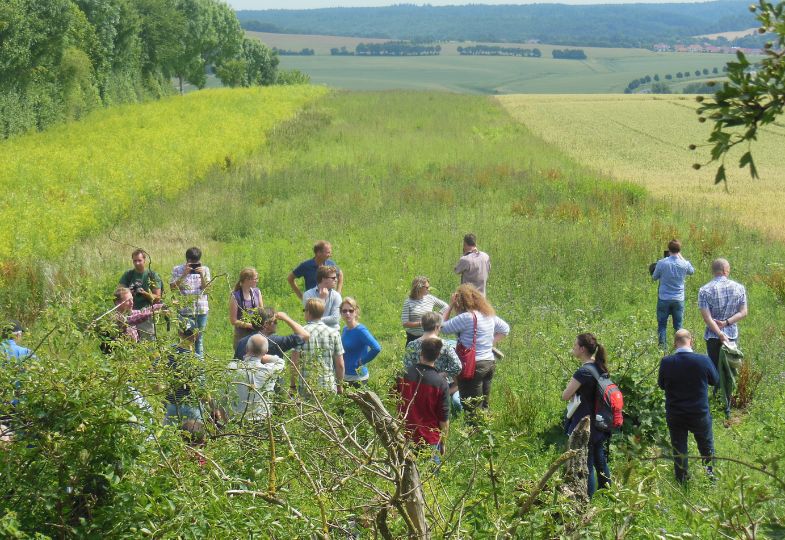
Partner field visit at the Diemarden demo site. PARTRIDGE is garnering interest from local citizens, volunteers, media, and politicians who are joining farm walks to learn about the project. Photo: PARTRIDGE.
The partners include a diverse range of organisations, including conservation groups, farmers’ associations, hunters’ associations, and government institutions. ‘The partners represent very different stances and opinions, but there is this strong feeling that we are working together towards the same aim. There is a lot of good energy. In fact, it’s the best project I have ever worked with,’ says Buner.
Paul Stephens concurs: ‘The partnership is very enthusiastic. The partners have even formed personal friendships and stay in each other’s homes! Also, the inclusion of local volunteers is really bolstering the project. Many hunters and farmers are conducting unpaid monitoring at the pilot sites which is extremely useful because they are on-site a lot more than anyone else.’
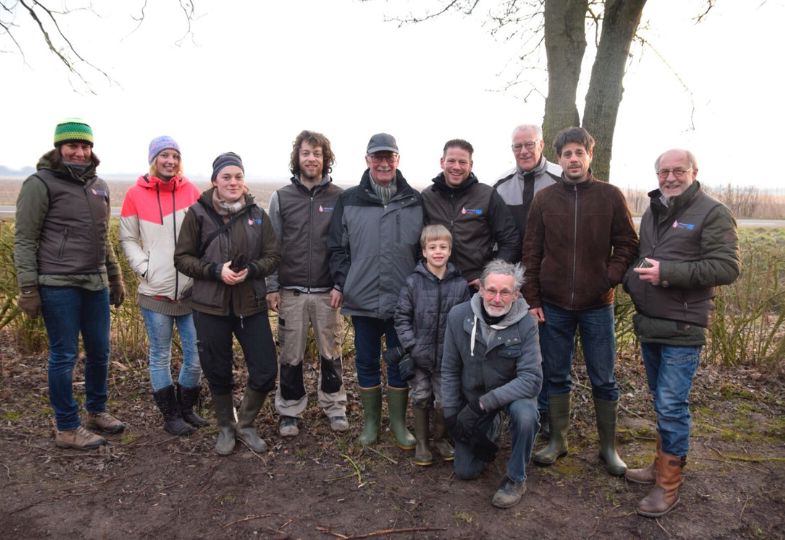
A group of Dutch PARTRIDGE volunteers. Photo: PARTRIDGE.
Ultimately, the project aims to reach far beyond its own limited scale. ‘We are working to ensure a broader uptake, including via policy integration. I firmly believe that if the PARTRIDGE methodology were implemented across Europe today, we could solve the problem of farmland insect and bird decline almost overnight,’ concludes Francis Buner.
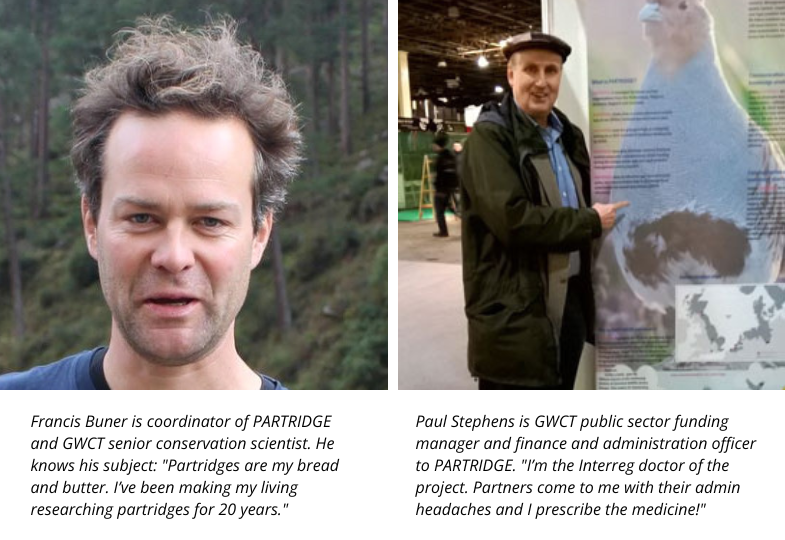
About the author
Sofie Forfang is a communications advisor at the Interreg North Sea Joint Secretariat.


